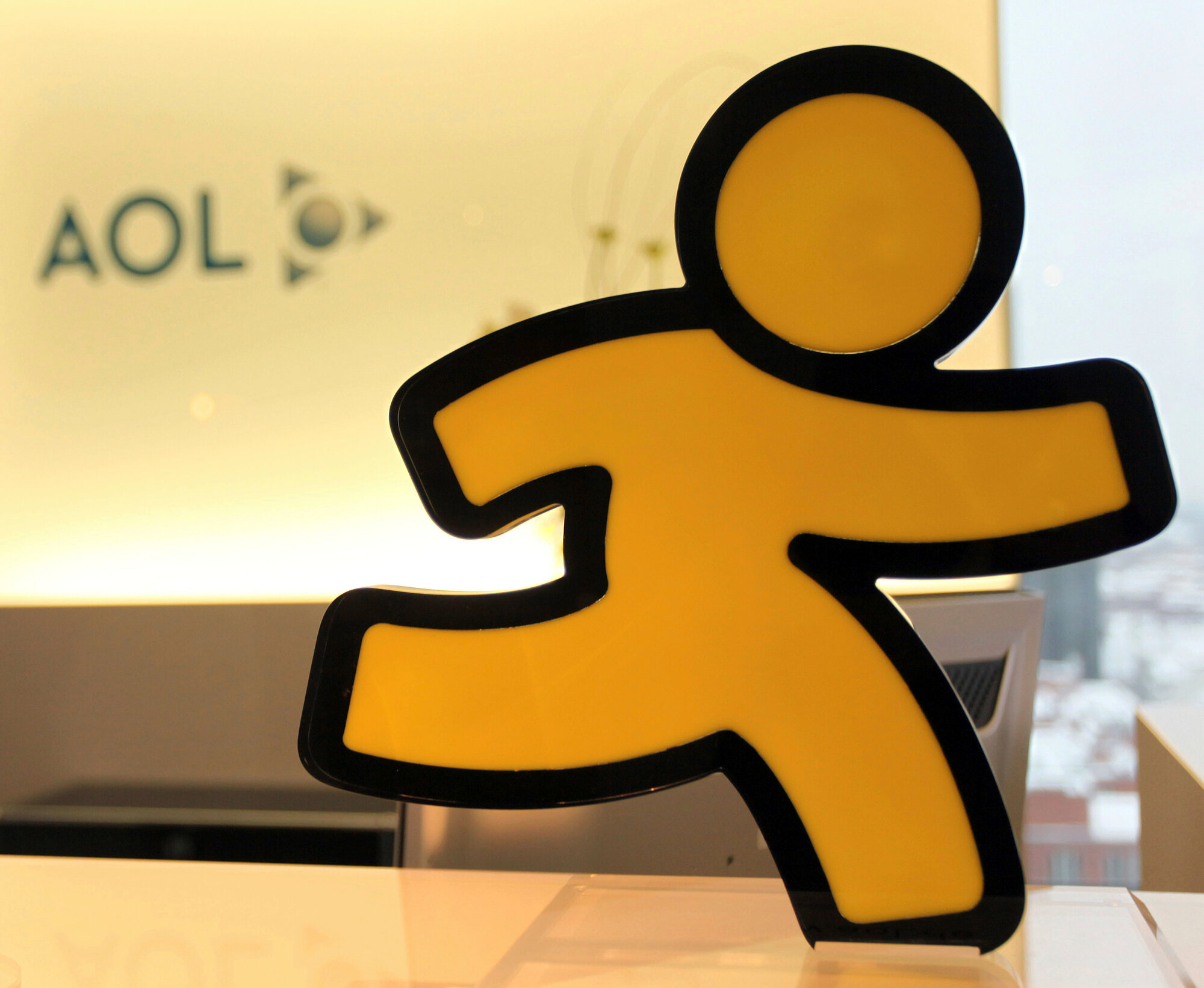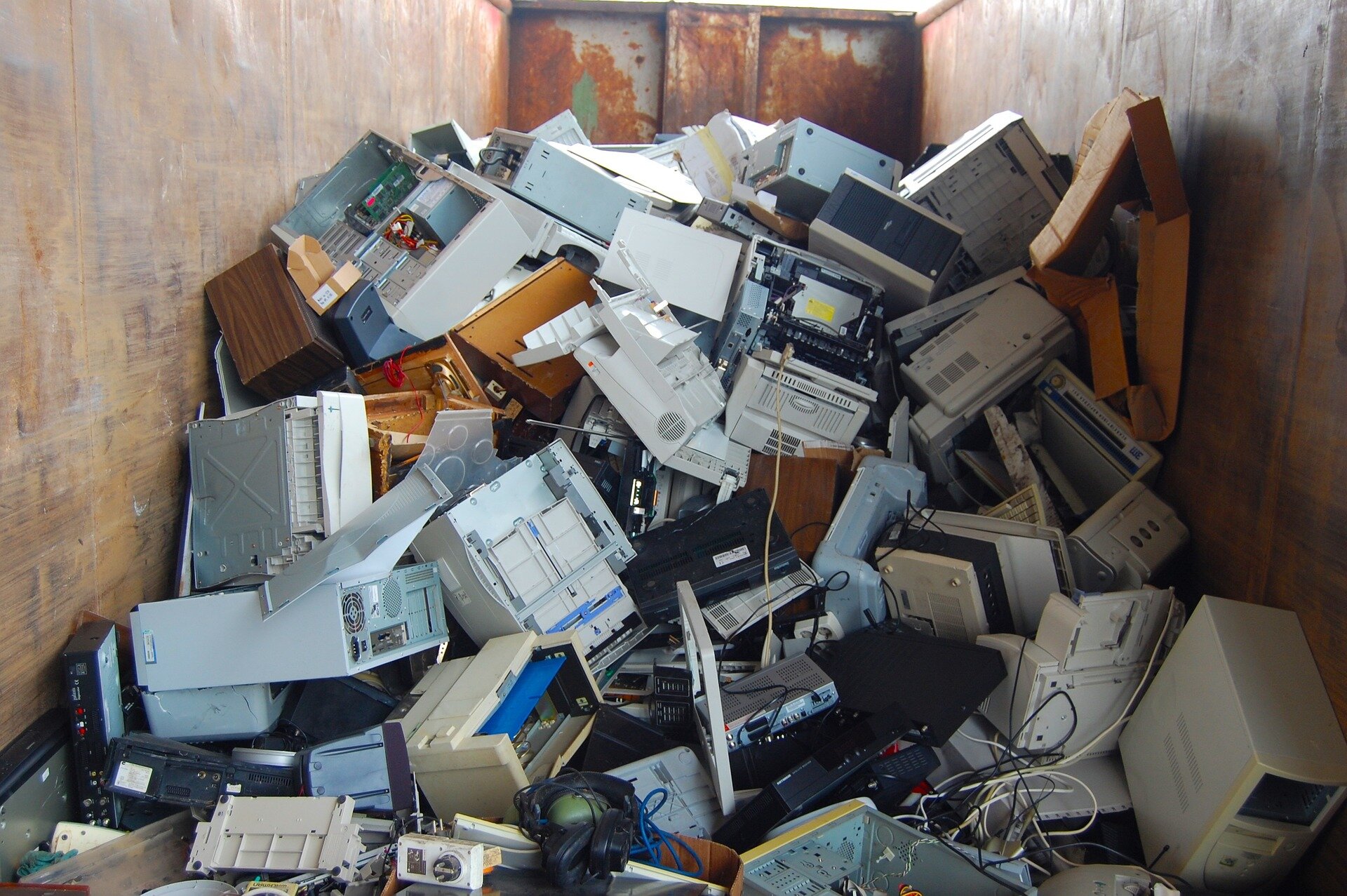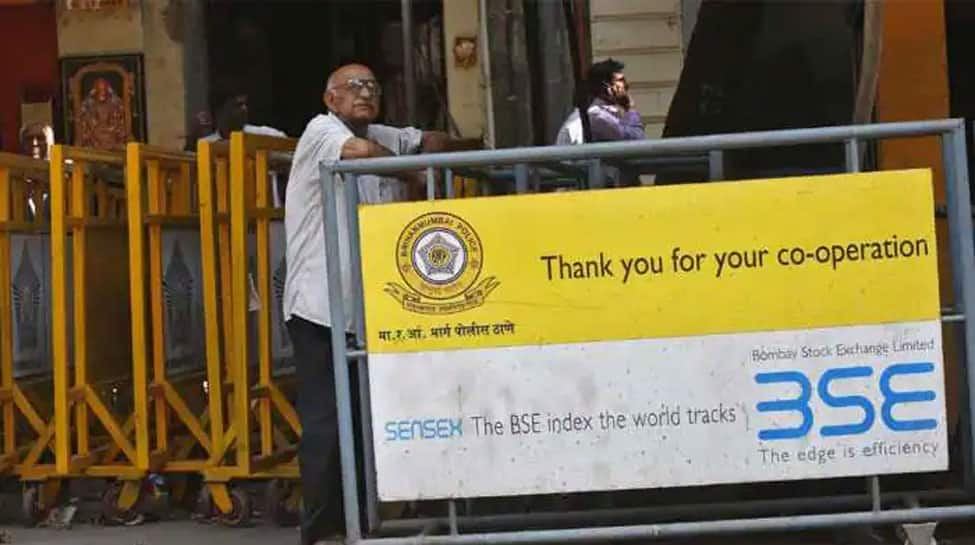Tech
AOL’s dial up internet takes its last bow, marking the end of an era

It’s official: AOL’s dial-up internet has taken its last bow.
AOL previously confirmed it would be pulling the plug on Tuesday (Sept. 30)—writing in a brief update on its support site last month that it “routinely evaluates” its offerings and had decided to discontinue dial-up, as well as associated software “optimized for older operating systems,” from its plans.
Dial-up is now no longer advertised on AOL’s website. As of Wednesday, former company help pages like “connect to the internet with AOL Dialer” appeared unavailable—and nostalgic social media users took to the internet to say their final goodbyes.
AOL, formerly America Online, introduced many households to the World Wide Web for the first time when its dial-up service launched decades ago, rising to prominence particularly in the 90s and early 2000s.
The creaky door to the internet was characterized by a once-ubiquitous series of beeps and buzzes heard over the phone line used to connect your computer online—along with frustrations of being kicked off the web if anyone else at home needed the landline for another call, and an endless bombardment of CDs mailed out by AOL to advertise free trials.
Eventually, broadband and wireless offerings emerged and rose to dominance, doing away with dial-up’s quirks for most people accessing the internet today—but not everyone.
A handful of consumers have continued to rely on internet services connected over telephone lines. In the U.S., according to Census Bureau data, an estimated 163,401 households were using dial-up alone to get online in 2023, representing just over 0.13% of all homes with internet subscriptions nationwide.
While AOL was the largest dial-up internet provider for some time, it wasn’t the only one to emerge over the years. Some smaller internet providers continue to offer dial-up today. Regardless, the decline of dial-up has been a long time coming. And AOL shutting down its service arrives as other relics of the internet’s earlier days continue to disappear.
Microsoft retired video calling service Skype just earlier this year—as well as Internet Explorer back in 2022. And in 2017, AOL discontinued its Instant Messenger—a chat platform that was once lauded as the biggest trend in online communication since email when it was founded in 1997, but later struggled to ward off rivals.
AOL itself is far from the dominant internet player it was decades ago—when, beyond dial-up and IMs, the company also became known for its “You’ve got mail” catchphrase that greeted users who checked their inboxes, as famously displayed in the 1998 film starring Tom Hanks and Meg Ryan by the same name.
Before it was America Online, AOL was founded as Quantum Computer Services in 1985. It soon rebranded and hit the public market in 1991. Near the height of the dot-com boom, AOL’s market value reached nearly $164 billion in 2000. But tumultuous years followed, and that valuation plummeted as the once-tech pioneer bounced between multiple owners. After a disastrous merger with Time Warner Inc., Verizon acquired AOL—which later sold AOL, along with Yahoo, to a private equity firm.
AOL now operates under the larger Yahoo name. A spokesperson for Yahoo didn’t have any additional statements about the end of AOL’s dial-up when reached by The Associated Press on Wednesday—directing customers to its previous summer announcement.
At the time Verzion it sold AOL in 2021, an anonymous source familiar with the transaction told CNBC that the number of AOL dial-up users was “in the low thousands”—down from 2.1 million when Verzion first moved to acquire AOL in 2015, and far below peak demand seen back in the 90s and early 2000s. But beyond dial-up, AOL continues to offer its free email services, as well as subscriptions that advertise identity protection and other tech support.
© 2025 The Associated Press. All rights reserved. This material may not be published, broadcast, rewritten or redistributed without permission.
Citation:
AOL’s dial up internet takes its last bow, marking the end of an era (2025, October 1)
retrieved 1 October 2025
from https://techxplore.com/news/2025-10-aol-dial-internet-era.html
This document is subject to copyright. Apart from any fair dealing for the purpose of private study or research, no
part may be reproduced without the written permission. The content is provided for information purposes only.
Tech
Europe tackles e-waste with eco-friendly innovation that helps reuse and repair

Researchers are developing reusable and environmentally friendly electronics for the health care, consumer and manufacturing sectors, replacing scarce materials with circular alternatives to build a sustainable future.
Europe’s appetite for electronics keeps growing, but so does the waste. From smartphones and laptops to medical sensors, more devices mean mounting piles of discarded hardware.
According to Eurostat, around 5 million metric tons of electronic waste is collected for recycling in the EU each year. That is more than 11 kilograms per household, enough to cover around 2,000 football pitches stacked a meter high.
These 5 million metric tons represent less than 40% of the total mass of electronics put on the European market annually. The rest often ends up in landfills because mixed materials make recycling difficult.
Smarter design
To tackle this challenge, the SUSTRONICS initiative is rethinking how electronics are made, from the materials used to the way products are assembled and repaired. Led by Dutch technology company Philips, it brings together 46 partners from 11 countries. The three-year initiative runs until May 2026.
“The SUSTRONICS researchers focus mainly on fundamental research into new solutions,” explained Ramon Caanen, who leads a sustainability consulting team at Philips.
This includes the use of bio-based, paper-based and more widely available materials, the sustainable manufacturing of electronic components as well as designs that enable better recycling.
The researchers’ goal is to embed sustainability into design, production and functionality, so that products can be better reused and more easily recycled.
That focus has gained urgency since the EU introduced new regulations on eco-design and the right to repair in 2024. They are meant to extend product lifespans, improve energy efficiency and make repairs simpler. They also aim to reduce environmental impact and promote a more circular economy with less waste.
Health care pilots
Health care is one of SUSTRONICS’s main proving grounds. While connected medical devices can improve patient care, their single-use electronic parts add to the e-waste problem. Three pilot studies are developing sustainable electronics for health care.
At Swedish hygiene company Essity Hygiene and Health, a partner in the global research, principal scientist Shabira Abbas is working on a smart incontinence pad designed to make life easier for both patients and staff.
The device is known as a change indicator and alerts staff when a pad needs replacing. A small clip-on reader sits outside the pad, is cleaned between patients, and is reused with each new pad.
“It is designed to improve both skin health and dignity,” said Abbas.
A removable electronic strip inside the pad measures temperature, humidity and enzymes. It can be recycled separately where facilities allow. The team uses paper substrates and 3D-printed metal-oxide sensors to reduce the use of material.
The pad also requires a small reader, which sits outside the pad, to transmit data to staff. This clip-on reader can be reused with each new pad.
“In between patients, you have to clean the reader, but otherwise they are reusable,” said Abbas. Her team’s challenge is making the connector foolproof and easy for staff to attach and remove.
They are also working on energy efficiency, adapting software to use minimal power while processing pad data. This is vital for medical devices that must run continuously, since the combined energy demand of many units greatly increases their overall carbon footprint.
The other two pilot devices include a skin patch for tracking glucose metabolism and a smart dressing for wounds, which signals when it needs replacing. In today’s medical practice, both are still single-use, so sustainability is a key challenge.
Better materials
The SUSTRONICS team is also exploring ways to improve production efficiency and use recyclable or environmentally friendly materials whenever possible. Part of the solution is moving to more common resources from those that are scarce and environmentally harmful, such as silver.
“Silver has a high upstream footprint. Replacing silver with more common materials such as copper or carbon can lower impact significantly. But the key challenge is to make these substitutes perform well in their intended electronics application,” said Caanen.
Beyond medical devices, pilots also target repairability in shavers and lighting, easier dismantling for recycling, and lower energy use.
Looking ahead
Their work ties in with wider EU goals. A new Circular Economy Act, expected in 2026, will create a stronger market for recycled materials, boosting both supply and demand across Europe. It supports the EU’s ambition to lead the world in circular economy practices by 2030.
Today, only about 12% of Europe’s materials are reused or recycled. The target is to double this to 24% by 2030 under the EU’s Clean Industrial Deal.
Caanen hopes that SUSTRONICS will become a flagship project for sustainable electronics, by demonstrating how the European electronics industry can benefit from sustainable, alternative materials for electronic components, while maintaining competitiveness.
For hospital patients, innovations like the smart pad could mean greater comfort, dignity and quality of care, while also contributing to a more sustainable, circular economy.
By combining practical health care solutions with ambitious environmental goals, the SUSTRONICS team demonstrates how technological innovation can improve everyday lives and support Europe’s drive for sustainability.
In the long term, such efforts could transform both the electronics industry and health care, showing that small devices can have a big impact.
Citation:
Europe tackles e-waste with eco-friendly innovation that helps reuse and repair (2025, November 17)
retrieved 17 November 2025
from https://techxplore.com/news/2025-11-europe-tackles-eco-friendly-reuse.html
This document is subject to copyright. Apart from any fair dealing for the purpose of private study or research, no
part may be reproduced without the written permission. The content is provided for information purposes only.
Tech
WIRED Roundup: Fandom in Politics, Zuckerberg’s Illegal School, and Nepal’s Discord Revolution

Leah Feiger: Zoë, I am obsessed with this story. Before you continue, I think that it’s really important to say that Caroline, the lovely reporter of this story on your business desk, obtained 1,665 pages of documents about the dispute about Zuckerberg’s house. This story is canon now.
Zoë Schiffer: Caroline Haskins is a complete star. Our fact-checking team literally cried when I asked them. They were like, “Wait, sorry, how many documents are we looking through?” I was like, “Yes.”
Leah Feiger: Shout out to the WIRED research team.
Zoë Schiffer: Absolutely. The school, I think we just have to say, is named after one of the Zuckerberg family chickens. It’s called the Bicken Ben School.
Leah Feiger: I mean, hearing you say this, it’s, I know you’re being serious, but again.
Zoë Schiffer: So, the Crescent City neighborhood in Palo Alto, where the Zuckerbergs live, as you can imagine, is some of the best real estate in the entire country. It’s filled with these gorgeous homes, a ton of greenery. Mark Zuckerberg has been expanding his presence throughout the years in this ultra fancy neighborhood. The plot of land that the Zuckerbergs live on has expanded to include 11 previously separate properties. This is so funny and just such a nightmare. If you’re living on the street, you paid whatever, $5 million for your house, and suddenly all of your neighbors are Mark Zuckerberg.
Leah Feiger: Important to note that not all of them are connecting either. I don’t totally understand what that means. Do they walk through a neighbor’s porch to get to their horse’s pool? What does this entail?
Zoë Schiffer: We have more questions. We have to Google Earth this. I think there’s some holes in this story that we need to fill in. The expansion first became a concern for Mark Zuckerberg’s neighbors, back in 2016, due to fears that his purchases were driving up the market pretty dramatically. But then, about five years later, neighbors started noticing that a school appeared to be operating out of the Zuckerberg compound. So, this is illegal to do without a permit, at least under the area’s residential zoning code. And so, naturally, the neighbors started to alert the city. Caroline Haskins, the reporter on the story, obtained over a thousand documents, like you said, outlining the resulting fight between the neighbors and the city authorities, basically arguing that, it felt to them like the Zuckerbergs were getting special treatment.
Tech
Urban infrastructure renewal: Engineers develop sustainable technique for even backfill distribution in aging city sites

Many developed nations are facing the simultaneous aging of infrastructure built during periods of rapid economic growth. Japan has reached a critical turning point where numerous buildings and structures constructed in the post-war boom era now require demolition and renewal. The catalyst intensified dramatically after the 2011 Great East Japan Earthquake, which exposed vulnerabilities in structures failing to meet modern disaster prevention standards, leading to sharply increased demolition activity in urban areas.
When structures are demolished, the foundation piles must be removed and classified as industrial waste, yet conventional backfilling methods consistently produce an uneven distribution of material throughout the borehole depth. This technical limitation creates serious risks, including ground settlement, structural tilting of adjacent buildings, and misalignment of newly installed foundations. As a result, the critical backfilling process lacks scientific rigor and quality control mechanisms.
In a recent breakthrough, a team of researchers led by Professor Shinya Inazumi from Shibaura Institute of Technology, Japan, has developed a novel method that can ensure uniform backfilling throughout the entire borehole depth, addressing both immediate safety concerns and long-term infrastructure sustainability. Their innovative findings were published in the journal Cleaner Engineering and Technology.
The proposed circulating mixing method was validated through model tests, field experiments, and advanced numerical simulations using the moving particle semi-implicit (MPS) method within a computer-aided engineering (CAE) framework. These tests demonstrated exceptional uniformity with a coefficient of variation of only 0.036, approximately ten times better than conventional soil improvement methods that typically range from 0.3 to 0.5. In addition, the field tests on 15-meter-deep boreholes confirmed that all samples exceeded the target strength of 1,500 kN/m² with no detection of structurally inadequate weak zones.
“Most significantly, our approach allows engineers to optimize process parameters and improve quality control by employing advanced MPS-CAE computer simulations to predict mixing behavior before construction. Moreover, it addresses Japan’s urgent infrastructure renewal needs while promoting sustainability by preventing soil degradation, reducing construction waste, and minimizing the carbon footprint of urban projects,” says Prof. Inazumi.
The findings reveal that this method is especially valuable when constructing high-rise buildings on sites with existing pile foundations, where improperly backfilled boreholes could compromise the stability of new structures worth millions of dollars. Notably, the proposed method prevents ground settlement and structural tilting that could lead to catastrophic failures during seismic events, addressing critical safety concerns in earthquake-prone regions.
“Our study establishes a new standard for geotechnical engineering in urban redevelopment with potential worldwide applications, particularly in cities facing aging infrastructure challenges. In densely populated metropolitan areas like Tokyo, New York, or London, where numerous buildings constructed during post-war economic boom periods now require demolition and reconstruction, this technology ensures safe and efficient site preparation,” says Prof. Inazumi.
The amalgamation of engineering techniques with numerical simulation in the proposed method enables the industry to shift from reactive quality assessment to proactive process optimization, improving the efficiency, safety, durability, and sustainability of urban redevelopment projects, especially in disaster-prone regions.
The paradigm shift in geotechnical engineering practice can help engineering consultancies and construction companies to reassure their clients of construction quality through pre-construction numerical analysis, enhancing transparency and accountability in urban infrastructure projects.
“Our innovative method supports sustainable urban development by minimizing construction waste and reducing the carbon footprint associated with material transportation and disposal. It further offers a pathway to improved geotechnical performance in urban infrastructure development, contributing to disaster resilience, protecting lives and property investments,” concludes Prof. Inazumi.
More information:
Shinya Inazumi et al, Sustainable approach to urban pile removal through evaluation of innovative circulating mixing for urban infrastructure renewal, Cleaner Engineering and Technology (2025). DOI: 10.1016/j.clet.2025.101103
Citation:
Urban infrastructure renewal: Engineers develop sustainable technique for even backfill distribution in aging city sites (2025, November 17)
retrieved 17 November 2025
from https://techxplore.com/news/2025-11-urban-infrastructure-renewal-sustainable-technique.html
This document is subject to copyright. Apart from any fair dealing for the purpose of private study or research, no
part may be reproduced without the written permission. The content is provided for information purposes only.
-

 Tech1 week ago
Tech1 week agoFrom waste to asset: Turning ethanol production CO₂ into jet fuel
-

 Tech3 days ago
Tech3 days agoNew carbon capture method uses water and pressure to remove CO₂ from emissions at half current costs
-

 Politics4 days ago
Politics4 days agoBritish-Pakistani honoured for transforming UK halal meat industry
-

 Sports2 days ago
Sports2 days agoTexas A&M officer scolds South Carolina wide receiver after touchdown; department speaks out
-
Sports1 week ago
College football winners and losers: The catch of the year saves Indiana
-

 Business1 week ago
Business1 week agoMore than 1,000 flights cancelled as US air traffic cuts enter second day
-

 Tech1 week ago
Tech1 week agoSecurity flaws in portable genetic sequencers risk leaking private DNA data
-

 Politics5 days ago
Politics5 days agoInternet freedom declines in US, Germany amid growing online restrictions


















